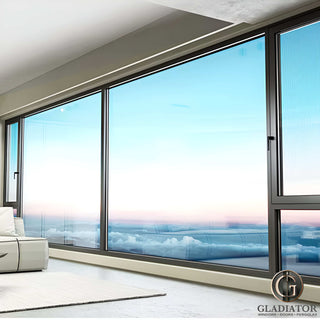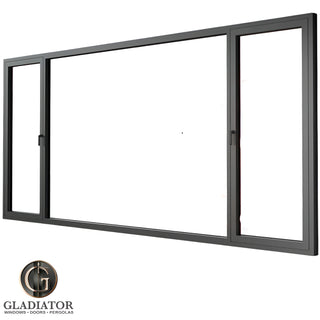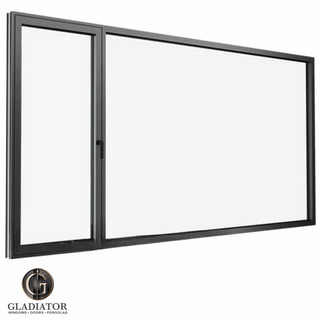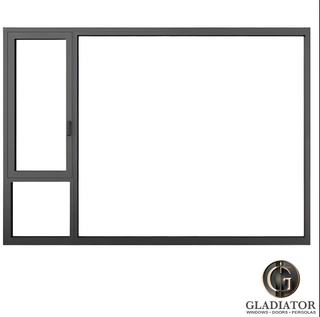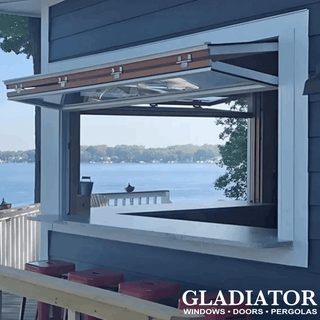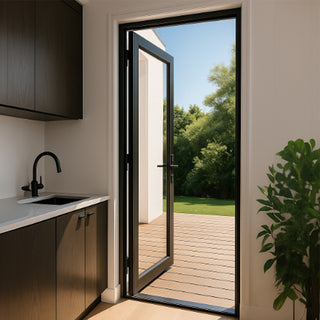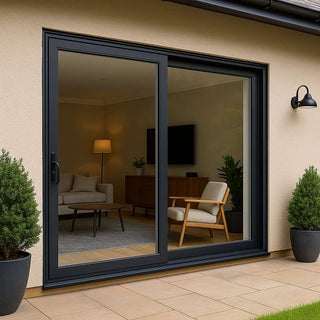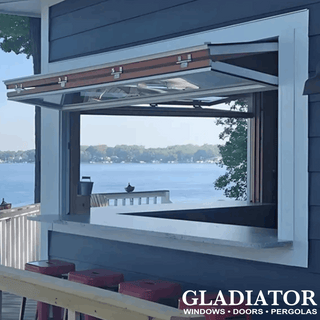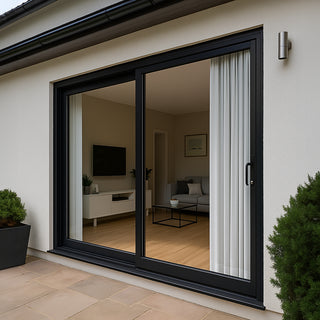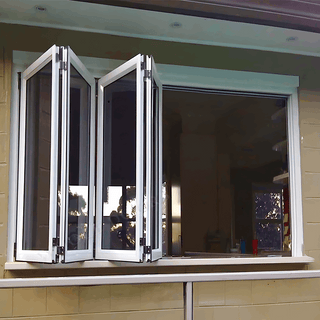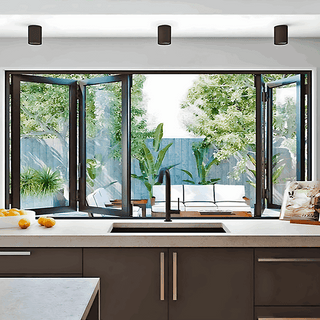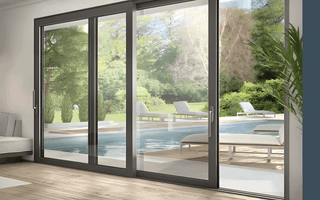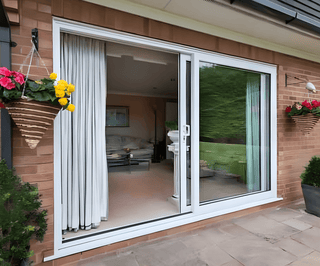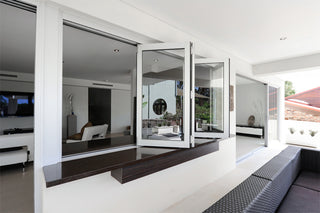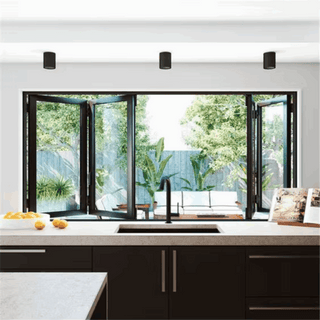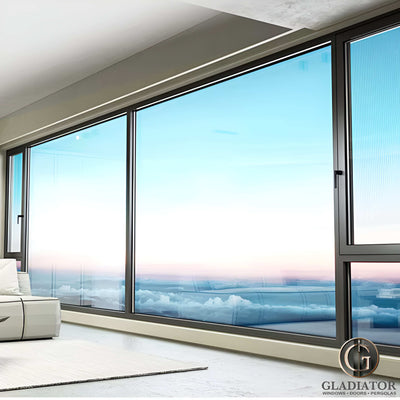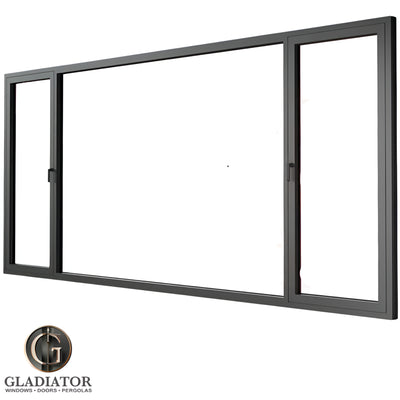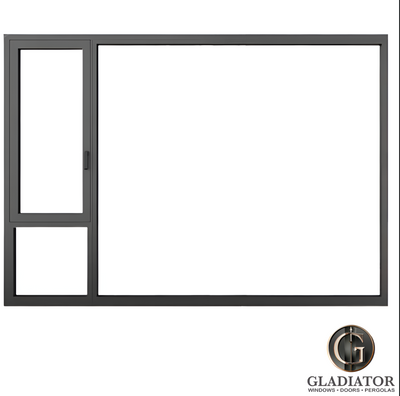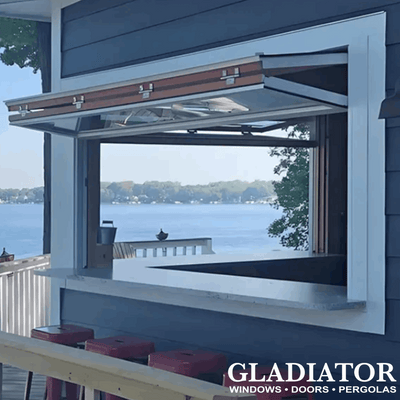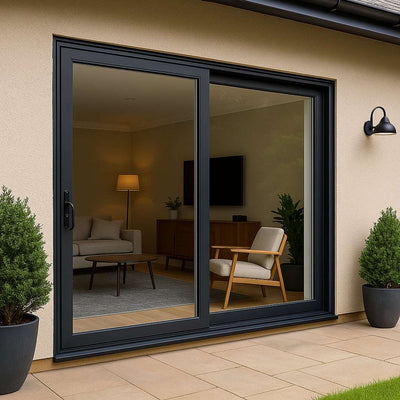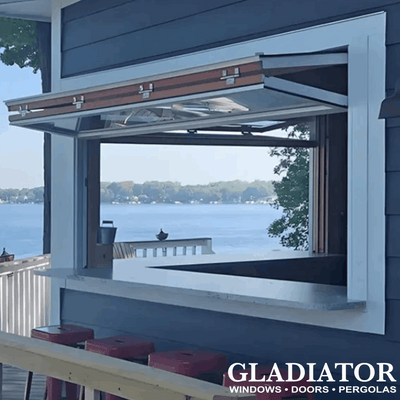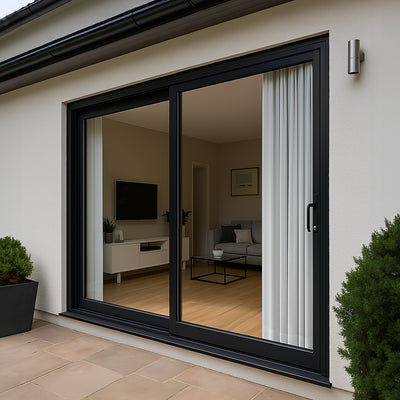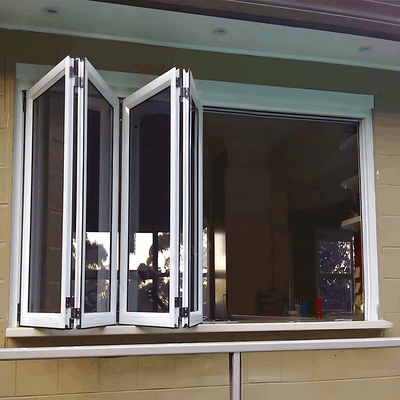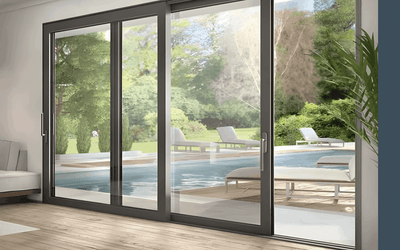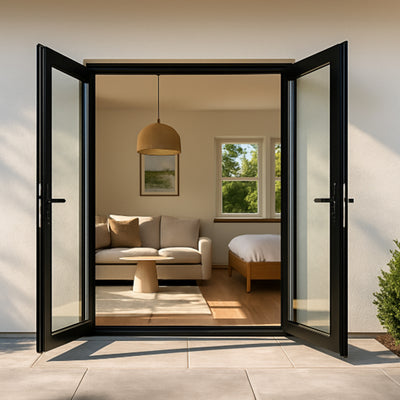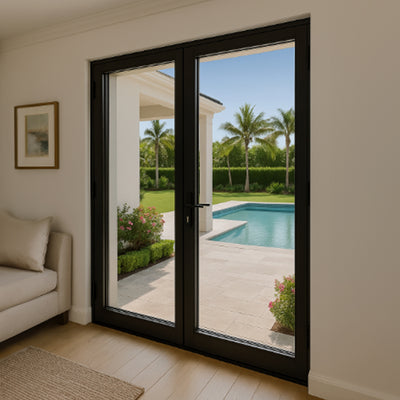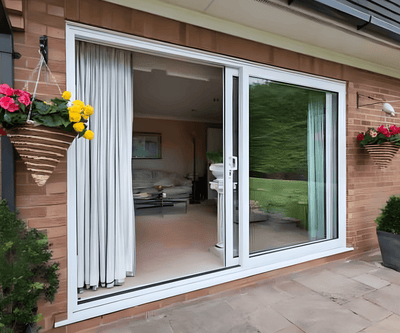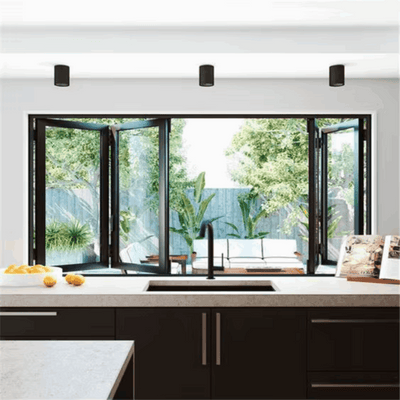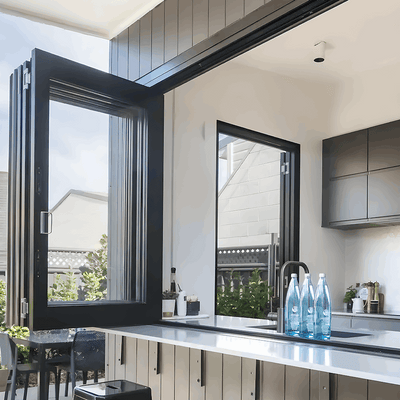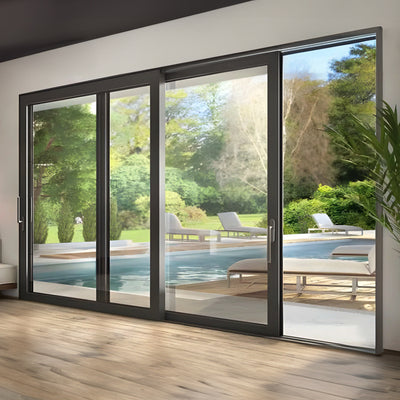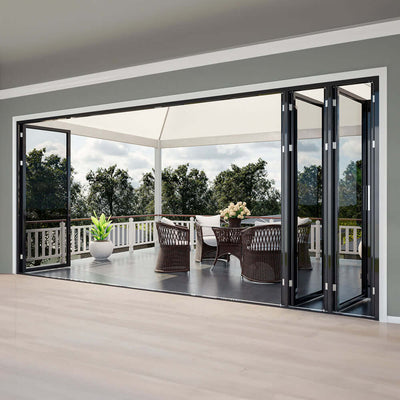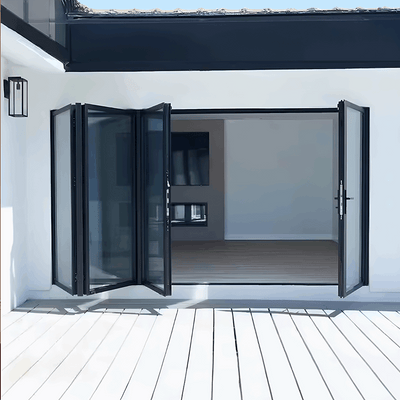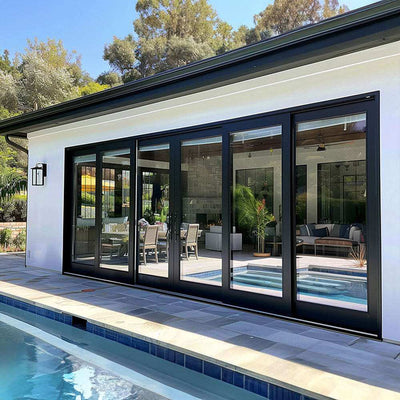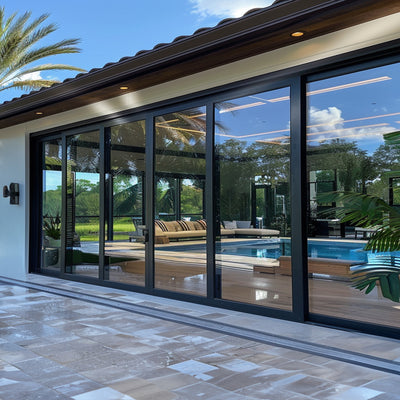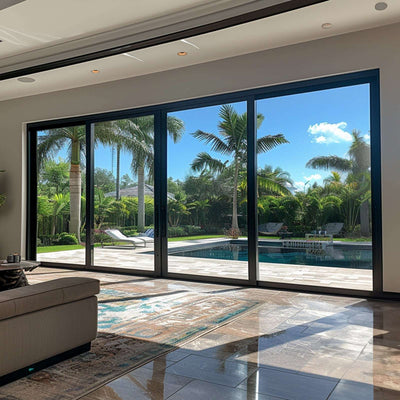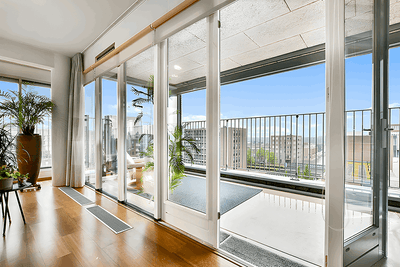Why Your Sliding Door Keeps Getting Stuck
A sticking sliding glass door can be a real headache for homeowners. This seemingly simple mechanism can become a daily struggle, often due to a combination of factors. Let's explore the most common culprits behind this annoying problem.
Track Troubles and Debris Buildup
One of the main reasons your sliding door sticks is the buildup of debris in the tracks. Dirt, dust, pet hair, and even insects can obstruct the smooth movement of the rollers. This accumulation creates friction, making it difficult to open or close the door. Think of it like trying to slide something across a sandy surface – it just doesn't move smoothly.
Weather Stripping Woes
Another frequent cause of sticking is worn or damaged weather stripping. While its primary function is insulation and sealing, weather stripping also plays a vital role in the door's operation. Deteriorated weather stripping can create drag, trap debris, and even misalign the door, making the sticking problem even worse. For instance, a torn seal can create extra friction as the door slides.
Seasonal Shifts and Alignment Issues
Seasonal temperature changes can also contribute to a sticky door. Fluctuations cause materials to expand and contract, potentially affecting the alignment. A door operating smoothly in the summer might stick in the winter due to slight shifts in the frame or track. Increased humidity can also cause wood frames to swell, further restricting movement. These subtle changes can accumulate over time, leading to more noticeable sticking.
Interestingly, the prevalence of sliding glass door issues is reflected in market trends. The global sliding glass door system market is expected to reach approximately $25 billion by 2033. This growth is driven by factors like increased demand for energy-efficient building solutions and a preference for modern designs. You can find more detailed statistics here: Learn more about sliding glass door market trends. As the market grows, advancements in door design and hardware may offer solutions to these common sticking issues, leading to smoother operation and increased durability.
Solutions That Actually Work For Stuck Doors
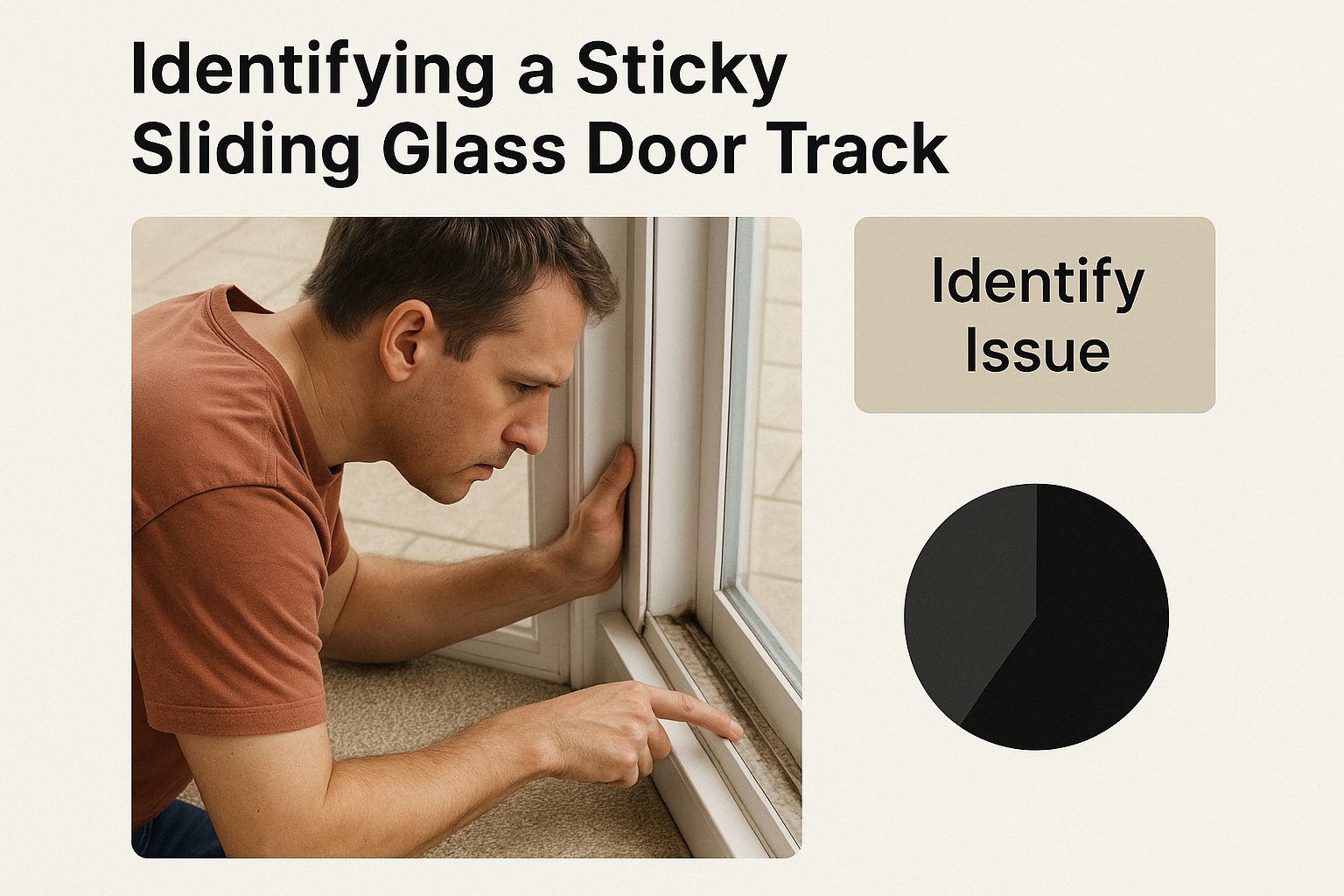
This infographic illustrates the first step in fixing a sticky sliding glass door: identifying the root cause. Accurate diagnosis is key before attempting any repairs. Figuring out if the problem is a dirty track, worn rollers, or damaged weather stripping will point you towards the best solution.
Now that we've covered the importance of identifying the problem, let's explore some practical solutions. Fixing a sticky sliding glass door doesn't have to be a difficult chore. Simple fixes can often restore smooth operation, saving you time and headaches.
Quick Fixes For Common Problems
-
Track Cleaning: Dirt and debris build-up in the tracks can significantly impede your door's movement. Regularly cleaning the tracks with a vacuum and a damp cloth can often solve sticking issues. For stubborn grime, try a toothbrush or a stiff brush.
-
Lubrication: After cleaning, apply a silicone-based lubricant to the tracks and rollers. This helps reduce friction and ensures smoother gliding. Avoid oil-based lubricants as they attract dust and can worsen the problem.
-
Weather Stripping Check: Inspect the weather stripping for damage. Worn weather stripping can create drag and collect debris. Replace any worn or damaged sections to improve the door's seal and movement.
Addressing Roller and Hardware Issues
Sometimes, the problem goes beyond simple cleaning and lubrication. If your door continues to stick, the rollers or hardware might need adjustment or replacement.
-
Roller Adjustment: Locate the adjustment screws on the rollers. These screws let you raise or lower the rollers, affecting the door's alignment. Turn the screws in small increments, testing the door after each adjustment.
-
Roller Replacement: Rollers can wear down over time. If adjusting them doesn't fix the sticking, consider replacing them with new ones. Make sure the new rollers match your door's specifications. For more information, see this helpful guide: How to master sliding glass door repair.
To help choose the right approach, review the comparison table below:
Sliding Door Sticking Solutions Comparison: This table compares different repair approaches based on difficulty level, cost, tools required, and success rate for various sticking problems.
| Solution Method | Difficulty Level | Estimated Cost | Tools Required | Success Rate |
|---|---|---|---|---|
| Track Cleaning | Easy | Low (under $5) | Vacuum, cloth, brush | High for debris-related sticking |
| Lubrication | Easy | Low (under $10 for lubricant) | Lubricant applicator | High for friction-related sticking |
| Weather Stripping Replacement | Medium | Moderate ($10-$30 per strip) | Screwdriver, utility knife | High for weather stripping related issues |
| Roller Adjustment | Medium | Low (no cost if you have the tools) | Screwdriver | Moderate |
| Roller Replacement | Medium to High | Moderate ($20-$50 per roller set) | Screwdriver, possibly pliers | High for worn roller issues |
This table summarizes the various solutions, from simple cleaning to more involved roller replacement, providing a quick overview of the expected cost, difficulty, and potential success rate. As you can see, starting with the easiest and least expensive options first is often the best approach.
Maintaining Your Sliding Glass Door
Prevention is key. Regular maintenance can prevent many sticking issues.
-
Regular Cleaning: Implement a routine cleaning schedule for the tracks. Weekly vacuuming and wiping can make a big difference.
-
Seasonal Checks: Perform thorough inspections each season, looking for wear on the weather stripping, rollers, and other hardware. This helps you address potential problems before they become major issues.
By following these simple solutions and maintenance tips, you can ensure your sliding glass door operates smoothly for years. For additional tips and solutions, check out our guide on sliding glass door repair.
Master Track Cleaning Like A Professional
Your sliding glass door's track is essential for smooth operation. But it's also a magnet for debris, a common cause of sticking. This section explores professional cleaning techniques from the experts.
Choosing The Right Cleaning Products
Many household cleaners can damage your tracks. Avoid harsh chemicals like bleach or ammonia, which can corrode materials. Choose gentle, effective solutions:
- Mild dish soap and warm water: This cuts through grease and grime safely.
- Vinegar and water solution: Vinegar's acidity dissolves mineral deposits and dirt.
- Specialized track cleaner: For stubborn buildup, consider a dedicated track cleaner.
Effective Debris Removal Strategies
Different debris needs different tactics. A vacuum with a brush attachment is great for loose dirt and dust. A stiff brush, or even an old toothbrush, works well for caked-on grime. For sticky residues, use a plastic scraper. Avoid metal tools, which can scratch. For more maintenance tips, see: How to master sliding glass door maintenance.
Maintaining Your Tracks And Preventing Sticking
Regular maintenance prevents sticking. Aim for weekly cleaning, especially during high-pollen or dusty seasons. If cleaning doesn't solve the problem, consult a technical troubleshooting guide.
Drainage And Inspection
Proper drainage prevents water-related sticking. Ensure your tracks slope for water runoff. Regularly check weep holes for clogs. Inspect for wear that might need professional attention.
Tools And Long-Term Care
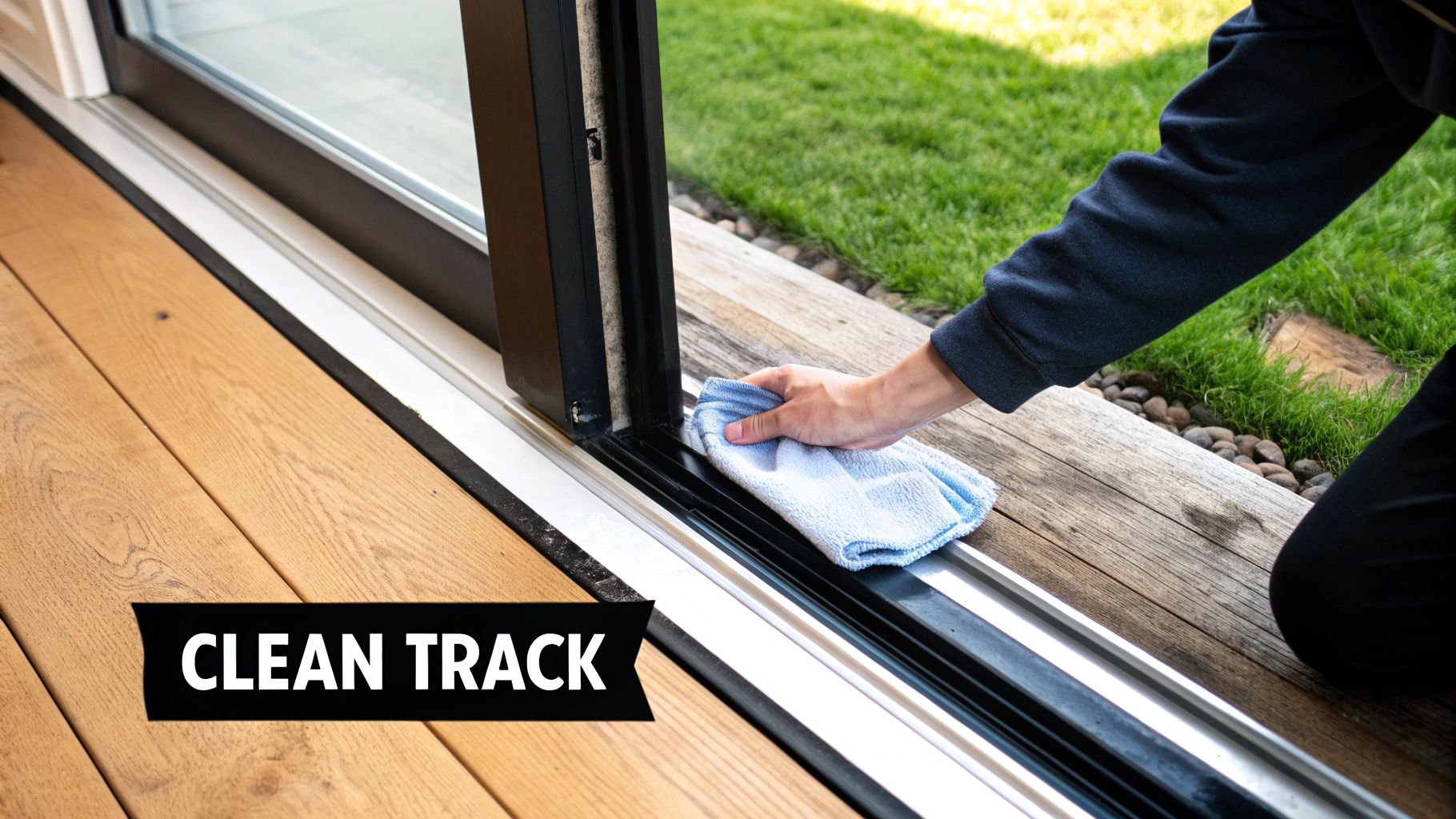
Invest in tools like a vacuum with attachments, cleaning brushes, and silicone-based lubricant. Silicone lubricant, applied after cleaning, reduces friction and prevents debris buildup. Regular inspection catches wear early, preventing bigger problems. This proactive approach ensures smooth gliding and avoids costly repairs.
Adjusting Rollers And Hardware The Right Way
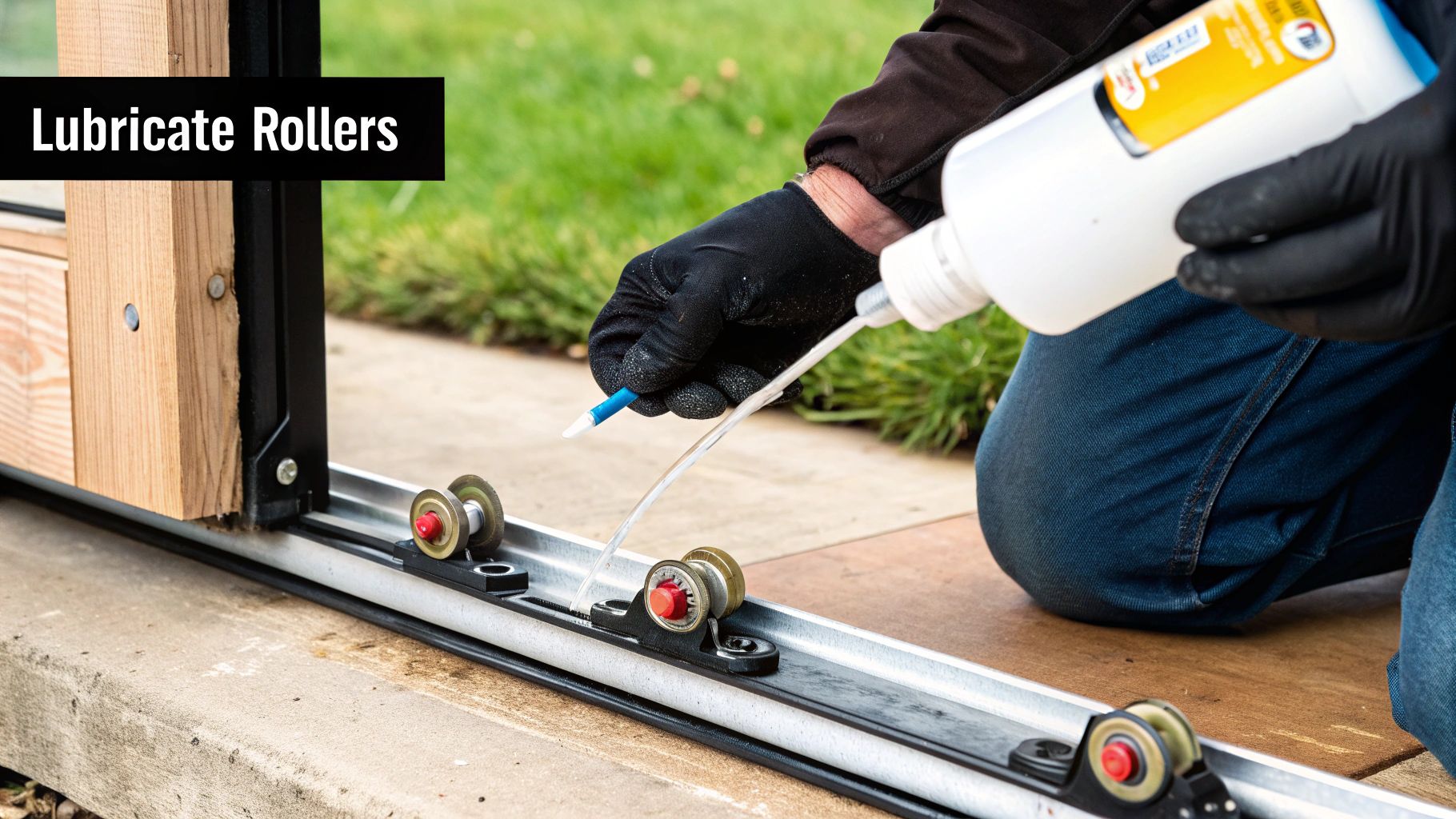
Sometimes, even a deep clean won't fix a sticky sliding glass door. The culprit? Often, it's the rollers and hardware. This is where DIY projects can get tricky. This guide will help you diagnose and solve these problems without making things worse. For a more in-depth look at door adjustments, check out this helpful resource: How to master door adjustments.
Identifying Roller Issues
First things first: figure out if your rollers are worn out or just misaligned. Worn rollers often wobble, feel loose, or show visible damage. Misaligned rollers might be in perfect shape, but simply not sitting correctly in the track. This can cause the door to stick or drag.
Adjusting the Rollers
Most sliding glass doors have adjustment screws located at the bottom or side of the door panel. These screws control the height of the rollers. Turning clockwise usually raises the door, while turning counterclockwise lowers it. Make small adjustments, about a quarter-turn at a time, and test the door’s movement after each adjustment. This prevents over-adjusting and potential headaches down the road. Remember to keep both rollers adjusted evenly for proper door balance.
Different Roller Types
Sliding glass doors use various types of rollers. Older doors might have steel rollers, whereas newer doors often feature nylon or plastic rollers. The adjustment mechanisms can differ slightly depending on the roller type. If you're unsure about your door's hardware, consulting a professional is always recommended.
Hardware Maintenance and Replacement
Sticking isn't always about the rollers. Other hardware components can also contribute to the problem. Inspect the track for bends or damage. Check the guides and stoppers that keep the door aligned. If any hardware is significantly worn or damaged, replacement is the best course of action. Regular hardware maintenance will extend the lifespan of your door and prevent future sticking issues.
It’s interesting to note the automatic sliding doors market, which includes sliding glass doors, is expected to reach $2.61 billion by 2025, growing at a CAGR of 6.2%. This growth is driven by the increasing demand for smart and energy-efficient options. You can explore this topic further here: Find more detailed statistics here. While these advancements don't solve current sticking issues, future innovations might minimize this common problem.
Safety Precautions
Working with sliding glass doors can be risky due to their weight. Always be cautious when lifting or tilting the door. Get a friend to help if needed. Avoid putting pressure directly on the glass to prevent cracks. If you're unsure about any part of the adjustment process, don't hesitate to call a qualified professional. Their expertise can save you money and ensure your door works properly. A smoothly operating sliding glass door improves the comfort and functionality of any home.
Weather Stripping Fixes That Stop Sticking
Worn weather stripping is often the hidden cause of a sticky sliding glass door. We frequently associate weather stripping with energy efficiency, overlooking its role in smooth door operation. But deteriorated seals can create significant drag, trap debris, and even cause the door to misalign.
Identifying Weather Stripping Types and Lifespans
Different weather stripping materials have different lifespans. Foam tape is the most common and budget-friendly option. However, it typically lasts only 3-5 years. Vinyl and rubber seals offer greater durability, with a lifespan of 5-10 years. For the longest-lasting solution, choose silicone seals, which can last 10 years or more. Knowing your current weather stripping material helps determine if a simple cleaning or a complete replacement is necessary. For more helpful tips, check out these Top patio door weather stripping tips.
Removing Old Weather Stripping Without Damage
Removing old weather stripping correctly is important to prevent damage to the door frame. Begin by gently peeling back a corner of the old weather stripping. If it resists, use a putty knife or another thin, flat tool to carefully pry it loose. Stubborn adhesive residue can be removed with a commercial adhesive remover. A mixture of warm water and dish soap can also be effective.
Installing New Weather Stripping
Installation steps vary depending on the type of weather stripping. Foam tape is generally self-adhesive, making installation a simple peel-and-stick process. Vinyl and rubber weather stripping often require specific tracks or clips. Silicone usually comes in tubes and is applied with a caulking gun. Be sure to follow the manufacturer's instructions for the best results.
Climate Considerations and Seasonal Adjustments
Temperature and humidity extremes can impact weather stripping performance. Cold weather can make seals brittle and prone to cracking. Hot, humid conditions can make them sticky or cause them to expand, leading to increased drag. Seasonal maintenance, such as lubricating the seals with silicone spray in winter and cleaning them with mild detergent in summer, can significantly extend their lifespan and help prevent sticking. Interestingly, the global patio doors market, valued at $38 billion in 2022, is projected to reach $59.3 billion by 2032. Find more detailed statistics here. This growth highlights the importance of addressing common issues like sticking doors for better user satisfaction.
Cost-Effective Replacement and Maintenance Strategies
Replacing weather stripping is a relatively inexpensive DIY project that can greatly improve door function. Regular cleaning, inspection, and lubrication can extend the life of your weather stripping and prevent future sticking issues. By addressing this often-neglected component, you can ensure smooth and effortless sliding door operation throughout the year.
Preventing Problems Before They Start
Maintaining your sliding glass door is far simpler than tackling a major repair. This proactive guide offers straightforward techniques and practical maintenance schedules to prevent sticking, all based on proven methods. These strategies will ensure your sliding glass door continues to operate smoothly.
Seasonal Maintenance Checklists
Just like your car, your sliding glass door requires seasonal attention. Different climates will necessitate different approaches. The following table provides a helpful starting point:
To help you stay organized, we've put together a handy schedule outlining recommended maintenance tasks for each season. This will help prevent common sliding door issues and keep your door operating smoothly year-round.
| Season | Maintenance Task | Frequency | Estimated Time | Priority Level |
|---|---|---|---|---|
| Spring | Clean tracks, lubricate rollers, inspect weather stripping | Once | 1 hour | High |
| Summer | Clean tracks, check for insect nests | Monthly | 30 minutes | Medium |
| Fall | Clean tracks, lubricate rollers, inspect and clean weather stripping | Once | 1 hour | High |
| Winter | Check weather stripping for drafts, lubricate as needed | As needed | 30 minutes | Medium |
Remember, this table offers a general guideline. You should adjust it based on your specific climate and the type of door you have.
Early Warning Signs and Weekly Habits
Addressing problems early simplifies repairs significantly. Squeaking, sticking, or a gritty feeling when sliding your door indicate potential issues developing. Cleaning the tracks weekly, particularly if you have pets or children, prevents debris buildup. This simple habit can significantly prolong the smooth operation of your door. Think of it like brushing your teeth – a small regular effort prevents more significant issues later.
Lubrication, Inspection, and Environmental Control
Proper lubrication is crucial. Use a silicone-based lubricant to avoid attracting dirt and grime. Be careful not to over-lubricate, as this can actually trap debris. Inspect the rollers, tracks, and hardware regularly for signs of wear and tear. Managing the environment around your door is also beneficial. Minimizing direct sunlight exposure, for example, reduces the expansion and contraction of materials, which can contribute to sticking.
Tools, Tracking, and Professional Inspections
Invest in high-quality tools such as a vacuum with a crevice attachment, a stiff brush, and a silicone lubricant applicator. Implement a simple tracking system – even a sticky note on the door frame – to remind you of maintenance schedules. Finally, consider an annual professional inspection. While regular DIY maintenance can prevent many problems, a professional can identify underlying issues you might miss and recommend necessary adjustments or repairs, like assessing the balance of your sliding glass door. For more information on different door types, check out our guide on bifold vs. sliding doors. These preventative measures can dramatically improve the lifespan and performance of your sliding glass door. By being proactive, you can avoid costly repairs and enjoy smooth, effortless operation for years to come.
When To Call The Professionals
Knowing when to call a professional for your sticking sliding glass door can save you time, money, and potential damage. While many common issues have simple DIY solutions, some problems demand specialized expertise. You might be interested in: Comparing bifold and sliding doors. This resource can help you decide if your current door type truly suits your needs.
Recognizing Complex Problems
Sometimes, the issue goes beyond a quick fix. Structural problems, such as a warped frame or settling foundation, necessitate a professional assessment. Similarly, complex hardware malfunctions often exceed the scope of DIY repairs. If basic troubleshooting steps haven't solved the sticking, it’s wise to consider professional help.
For example, a door consistently binding in one spot, even after roller adjustments and lubrication, might indicate a warped track. This typically requires professional repair.
Evaluating Repair vs. Replacement
Before attempting DIY repairs, consider whether your home insurance might cover professional service. Check your policy details; for example, you might look into Care Health Insurance if that's your provider. Weigh the cost of professional repair against the expense of a new door. A professional can offer valuable guidance.
If your door is old, significantly damaged, or requires extensive repairs, replacement could be the more economical choice. This is especially relevant if the door's energy efficiency is compromised, resulting in higher utility bills.
Choosing a Qualified Professional
Selecting the right professional is crucial. Seek licensed and insured contractors experienced in sliding door repair. Request references and check online reviews. A reputable professional provides a detailed estimate outlining the work and cost.
Don't hesitate to ask about their experience and approach. This ensures they understand your specific needs.
Warranty and Insurance Considerations
Review your door's warranty before attempting any repairs. Some warranties become void if you try DIY fixes. Your homeowner’s insurance may cover specific door damage.
Contact your insurance provider to understand your coverage and potential claim processes. Documenting damage with photos and videos can be beneficial.
Cost Estimates and Red Flags
While costs vary, common repairs like roller replacement typically cost between $75 and $200 per roller. Track replacement usually ranges from $150 to $400. Certain issues, such as broken glass or significant frame damage, immediately signal the need for professional intervention.
These issues create safety hazards and require expert handling. Difficulty locking or unlocking the door also demands immediate professional attention, as it compromises home security.
Communicating With Technicians
Clearly describe the problem to the technician. Note when the sticking began, specific locations where it occurs, and any steps you’ve already taken. This information helps them diagnose the issue and develop a solution quickly.
Clear communication ensures you get the desired results at a fair price and avoids unnecessary back-and-forth. Ask clarifying questions to fully understand the proposed repairs and costs.
Ready to upgrade your windows and doors? Gladiator Window and Doors offers high-quality, custom-made options at the lowest prices in the USA. Get a free quote today! We specialize in extra-large sliding doors, pivot doors, and bifold doors, ensuring a perfect fit for any home. Our expert team is ready to help you find the ideal solution.

















